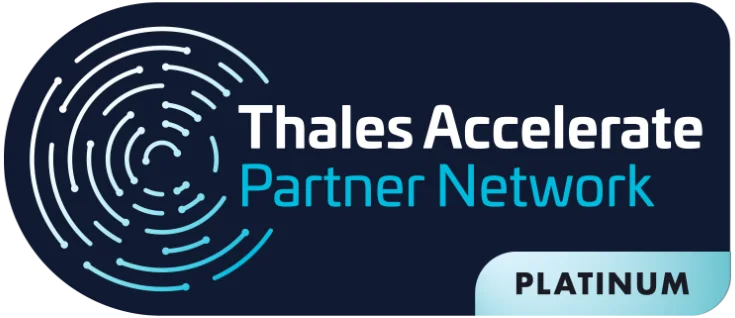While cyber attacks and threats are an ongoing struggle and a major challenge for businesses , they can be avoided by knowing the various types of protocols, exploits, tools, and resources used by cybercriminals. In addition, knowing where and how to expect attacks ensures that you create preventive measures to protect your systems.
Basically, cyber attacks are executed with malicious intent, when a cybercriminal tries to exploit a vulnerability in an organization’s system or individuals. These attacks threaten to steal, alter, destroy, disable, gain access to, or make use of an unauthorized asset.
In practice, cyber attacks, threats and vandalism are a dangerous and growing problem for companies.
Almost every modern organization requires at least one computer network and the assets that make up its connectivity structure, such as switches, access points, and routers, to operate in its IT infrastructure. Besides this, we have as computational structure servers, desktops, laptops, printers, and other mobile devices that complete a technological architecture.
Unfortunately, while these devices and applications offer a great benefit to the enterprise, they can also pose a risk. All it takes is inefficient asset management or an employee clicking on a malicious link, and then cybercriminals gain access to your network and infect your systems.
But this risk can be reduced.
How to prevent cyber attacks?
Preventing a breach of your network and systems requires protection against a variety of cyber attacks. For each attack, the appropriate countermeasure must be deployed/used to prevent it from exploiting a vulnerability or weakness.
The first line of defense for any organization is to assess and implement security controls.
1. Break the pattern of cyberattack
Preventing, detecting or stopping the cyber attack at the earliest opportunity limits the impact on business and the potential for reputational damage.
Even though it is usually the more motivated attackers who have the persistence to carry out multi-stage attacks, they often do this using common, cheaper, and easier-to-use tools and techniques.
Likewise, take a defense-in-depth approach to mitigate risk across the full range of potential cyber attacks, giving your company more resilience to deal with attacks that use more customized tools and techniques.
2. Reduce your exposure by using critical security controls against cyber attack
Fortunately, there are effective and affordable ways to reduce your organization’s exposure to the most common types of cyber attack on Internet-exposed systems.
- Boundary firewalls and Internet gateways – establish network perimeter defenses, particularly Web proxying, Web filtering, content scanning, and firewall policies to detect and block executable downloads, block access to known malicious domains, and prevent users’ computers from communicating directly with the Internet;
- Malware protection – establish and maintain malware defenses to detect and respond to known cyber attack code;
- Patch management – fixes known vulnerabilities with the latest software version to prevent attacks that exploit software bugs;
- Allow list and run control – prevents unknown software from being run or installed, including AutoRun on USB and CD drives;
- Secure configuration – restrict the functionality of each device, operating system, and application to the minimum necessary for business operation;
- Password policy – make sure that an appropriate password policy is in place and followed;
- User access control – includes limiting the execution permissions of normal users and enforcing the principle of least privilege.
3. Attenuate the ‘research’ stage
Any information published for open consumption should be systematically filtered before being released to ensure that anything of value to an attacker (such as software and configuration details, names/jobs/titles of individuals, and any hidden data) is removed.
Training, education, and user awareness are important. All your users must understand how published information about your systems and operation can reveal potential vulnerabilities.
They need to be aware of the risks of discussing work-related topics on social media and the potential to be targeted by cyber attack and phishing attacks. They must also understand the risks to the business of releasing confidential information in general conversations, unsolicited phone calls, and e-mail recipients.
4. Reduce the ‘delivery’ stage
The delivery options available to an attacker can be significantly reduced by applying and maintaining a small number of security controls, which are even more effective when applied in combination:
- Up-to-date malware protection can block malicious e-mails and prevent malware from being downloaded from websites;
- Firewalls and proxy servers can block unsafe or unnecessary services and can also keep a list of known bad sites. Similarly, subscribing to a site reputation service to generate a list of denied sites can also provide additional protection;
- A technically enforced password policy will prevent users from selecting easily guessed passwords and lock accounts after a specified number of unsuccessful attempts. Additional authentication measures for access to particularly confidential corporate or personal information should also be in place;
- Secure configuration limits system functionality to the minimum necessary for business operation and should be applied systematically to all devices used to conduct business.
5. Minimize the ‘breach’ stage of the cyber attack
As with the delivery stage, the ability to successfully exploit known vulnerabilities can be effectively mitigated with just a few controls, which are best deployed together.
- All malware depends on known and predominantly patched software flaws. Effective vulnerability patch management ensures that patches are applied at the earliest opportunity, limiting the time your organization is exposed to known software vulnerabilities;
- Malware protection at the Internet gateway can detect known malicious code in an imported item, such as an e-mail. These measures should be complemented by malware protection at key points in the internal network and on users’ computers, where available;
- Well implemented and maintained user access controls will restrict the applications, privileges, and data that users can access. The secure setup can remove unnecessary software and default user accounts. It can also ensure that default passwords are changed and that all automatic features that can activate malware immediately (such as AutoRun for media drives) are disabled;
- Training, education and user awareness are extremely valuable in reducing the likelihood of successful ‘social engineering’. However, with the pressures of work and the sheer volume of communications, you cannot rely on this as a control to mitigate even a cyber attack;
- Finally, the key to detecting a breach is the ability to monitor all network activity and analyze it to identify any malicious or unusual activity.
If all measures for the research, delivery and breach stages are consistently in place, most cyber attacks can be prevented.
However, if the cybercriminal is able to use tailored features, you should assume that they will bypass them and get into your systems. Ideally, companies should have a good understanding of what constitutes ‘normal’ activity on their network, and effective security monitoring should be able to identify any unusual activity.
Once a technically capable and motivated attacker has full access to your systems, it can be much more difficult to detect their actions and eradicate their presence. This is where a complete defense-in-depth strategy can be beneficial.
The CipherTrust Data Security Platform solution allows companies to protect their structure against cyber attacks
According to IDC, more than 175 zetabytes of data will be created by 2025, and today more than half of all corporate data is stored in the cloud.
To handle the complexity of where data is stored, CipherTrust Data Security Platform provides strong capabilities to protect and control access to sensitive data in databases, files, and containers. Specific technologies include:
CipherTrust Transparent Encryption
Encrypt data in on-premises, cloud, database, file, and Big Data environments with comprehensive access controls and detailed data access audit logging that can prevent the most malicious cyber attacks.
CipherTrust Database Protection
It provides transparent column-level encryption of structured and confidential data that resides in databases such as credit card, social security numbers, national identification numbers, passwords, and e-mail addresses.
CipherTrust Application Data Protection
It offers APIs for developers to quickly add encryption and other cryptographic functions to their applications, while SecOps controls the encryption keys.
CipherTrust Tokenization
It offers application-level data tokenization services in two convenient solutions that provide customer flexibility – Token without Vault with dynamic policy-based data masking and Tokenization in Vault.
CipherTrust Batch Data Transformation
Provides static data masking services to remove sensitive information from production databases so that compliance and security issues are alleviated when sharing a database with a third party for analysis, testing, or other processing.
CipherTrust Manager
It centralizes keys, management policies, and data access for all CipherTrust Data Security Platform products and is available in FIPS 140-2 Level 3 compliant physical and virtual formats.
CipherTrust Cloud Key Manager
It offers its own key lifecycle management (BYOK) for many cloud infrastructure, platform, and software-as-a-service providers.
CipherTrust KMIP Server
It centralizes key management for the Key Management Interoperability Protocol (KMIP) commonly used in storage solutions.
CipherTrust TDE Key Manager
Centralizes key management for encryption found in Oracle, SQL and Always Encrypted SQL.
The portfolio of data protection products that make up the CipherTrust Data Security Platform solution enables companies to protect data at rest and in motion across the entire IT ecosystem and ensures that the keys to this information are always protected and only under your control.
It simplifies data security, improves operational efficiency, and accelerates compliance time. Regardless of where your data resides.
The CipherTrust platform ensures that your data is secure, with a wide range of proven, industry-leading products and solutions for deployment in data centers, either those managed by cloud service providers (CSPs) or managed service providers (MSPs), or as a cloud-based service managed by Thales, a leading security company.
Tool portfolio that ensures data protection against cyber attacks
With data protection products from the CipherTrust Data Security Platform, your company can:
Strengthen security and compliance against cyber attack
CipherTrust data protection products and solutions address the demands of a range of security and privacy requirements, including electronic identification, authentication, and trust, Payment Card Industry Data Security Standard (PCI DSS), General Data Protection Law (LGPD)among other compliance requirements.
Optimizes team and resource efficiency against cyber attacks
CipherTrust Data Security Platform offers the broadest support for data security use cases in the industry, with products designed to work together, a single line for global support, a proven track record of protecting against evolving threats, and the industry’s largest ecosystem of data security partnerships.
With a focus on ease of use, APIs for automation, and responsive management, the CipherTrust Data Security Platform solution ensures that your teams can quickly deploy, secure, and monitor the protection of your business.
In addition, professional services and partners are available for design, implementation, and training assistance to ensure fast and reliable implementations with minimal staff time.
Reduces total cost of ownership
CipherTrust Data Security Platform’s data protection portfolio offers a broad set of data security products and solutions that can be easily scaled, expanded for new use cases, and have a proven track record of protecting new and traditional technologies.
With CipherTrust Data Security Platform, companies can prepare their investments for the future while reducing operating costs and capital expenditures.
About Eval
With a track record of leadership and innovation dating back to 2004, Eval not only keeps up with technological trends, but we are also in an incessant quest to bring news by offering solutions and services that make a difference to people’s lives.
With value recognized by the market, EVAL’s solutions and services meet the highest regulatory standards of public and private organizations, such as SBIS, ITI, PCI DSS, and LGPD. In practice, we promote information security and compliance, increase companies’ operational efficiency, and reduce costs.
Innovate now, lead always: get to know Eval’s solutions and services and take your company to the next level.
Eval, safety is value.







